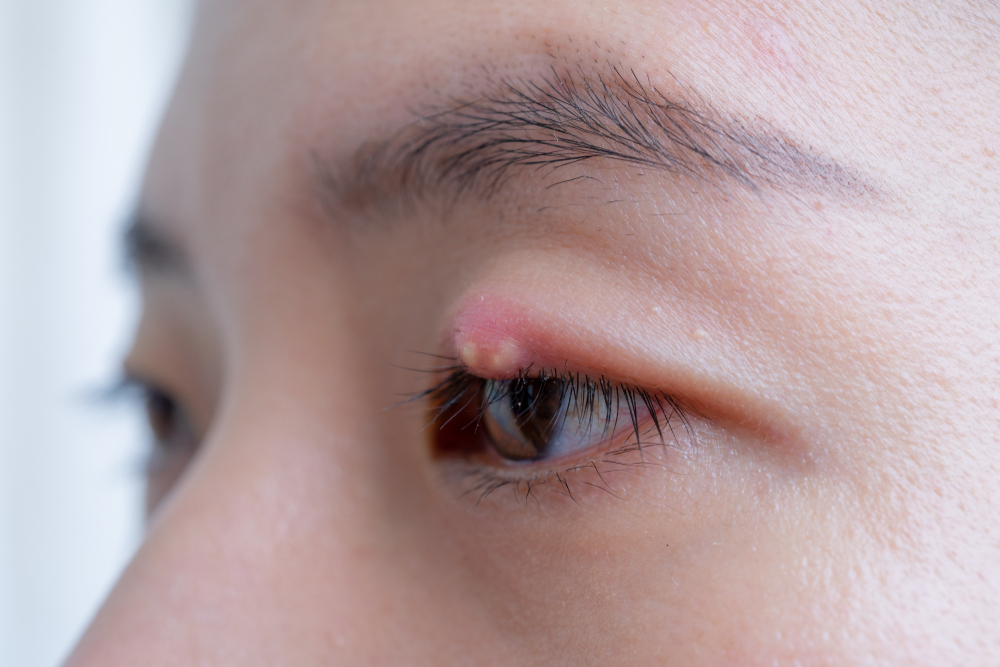
Blepharitis is a common eyelid condition characterized by inflammation and irritation. The inflammation often happens at the base of the eyelashes. It can affect individuals of all ages. It can be chronic and lead to discomfort and potential complication if untreated.
Causes of Blepharitis
Bacterial and fungal infections - Blepharitis can result from bacteria or fungi on the eyelids. Staphylococcus and Demodex mites cause it. Poor eyelid hygiene, excessive oil production, or a compromised immune system can heighten the risk of infection.
Oil Gland Dysfunction - Meibomian gland dysfunction (MGD) is an underlying cause of the condition. The meibomian glands in the eyelids produce the oil that forms the outer layers of tears. Dysfunction in these glands can lead to the accumulation of oils and inflammation.
Skin Conditions - Some skin conditions, like seborrheic dermatitis and rosacea, can cause blepharitis. Seborrheic dermatitis causes flaky, itchy skin. Rosacea leads to facial redness, swollen blood vessels, and small bumps.
Symptoms
Redness and swelling - The eyelids may appear red, swollen, and puffy.
Irritation and itching - Patients with blepharitis often experience discomfort. It could be from itching and a sensation of having something in the eye.
Crusty eyelashes - The base of the eyelashes can become coated with a greasy, crusty substance.
Watery eyes - Blepharitis can cause excessive tearing as the eyes attempt to flush out the irritants.
Light sensitivity - Some individuals with blepharitis may experience light sensitivity. The condition is popularly known as photophobia.
Dry eyes - Malfunctioning meibomian glands can result in insufficient oil production. It can lead to dry eyes and eye discomfort.
Diagnosis
Blepharitis diagnosis happens through a comprehensive eye examination. An eye care professional will examine the eyelids. They will check tear production and check for signs of inflammation. They may take a sample of eyelid debris for further analysis to identify the cause.
Treatment
Maintaining proper eyelid hygiene is essential for managing blepharitis. Warm compresses and gentle eyelid massages help. Using a diluted baby shampoo or specialized eyelid cleanser can also help. It can remove debris, reduce inflammation, and control bacterial or fungal growth.
Your eye care professional may prescribe topical or oral medications, especially in more severe cases. Antibiotic ointments, steroid eye drops, or artificial tears can help. It can provide relief from inflammation and reduce symptoms.
An optometrist can also perform meibomian gland expression. The procedure unclogs and expresses the blocked oil glands in the eyelids. It helps to improve oil flow and reduce inflammation. It can happen manually or with the help of specialized tools.
Anti-inflammatory treatments can help in cases where inflammation is a significant factor. Corticosteroid eye drops or ointments may help reduce swelling and redness. Management of underlying conditions like seborrheic or rosacea can help. It can reduce blepharitis symptoms.
Nutritional supplements like omega-3 fatty acids improve the function of oil glands. They also reduce inflammation in the eyes. Consulting an eye care professional can help determine the appropriate dosage.
Making lifestyle modifications can help manage blepharitis. These include avoiding eye makeup or using hypoallergenic products. It also entails maintaining a healthy diet and managing stress levels.
Prevention
Not all cases of blepharitis are preventable. But some measures can reduce the risk or severity of the condition. Regular cleaning of the eyelids and removing any debris or crusting can help. It can prevent the buildup of bacteria or fungi.
Avoiding exposure to smoke, allergens, and harsh chemicals can help. It prevents inflammation and reduces the risk of developing blepharitis. Makeup and contact lens hygiene are also vital. It helps prevent bacterial growth and reduces the risk of developing blepharitis.
For more information on blepharitis, visit Primary Vision Care at our offices in Newark, Waynesville, Lancaster, Mount Vernon, or Wilmington, Ohio. Call (740) 299-1155, (513) 897-2211, (740) 654-9909, (740) 393-6010, or (937) 382-4933 to book an appointment today.







